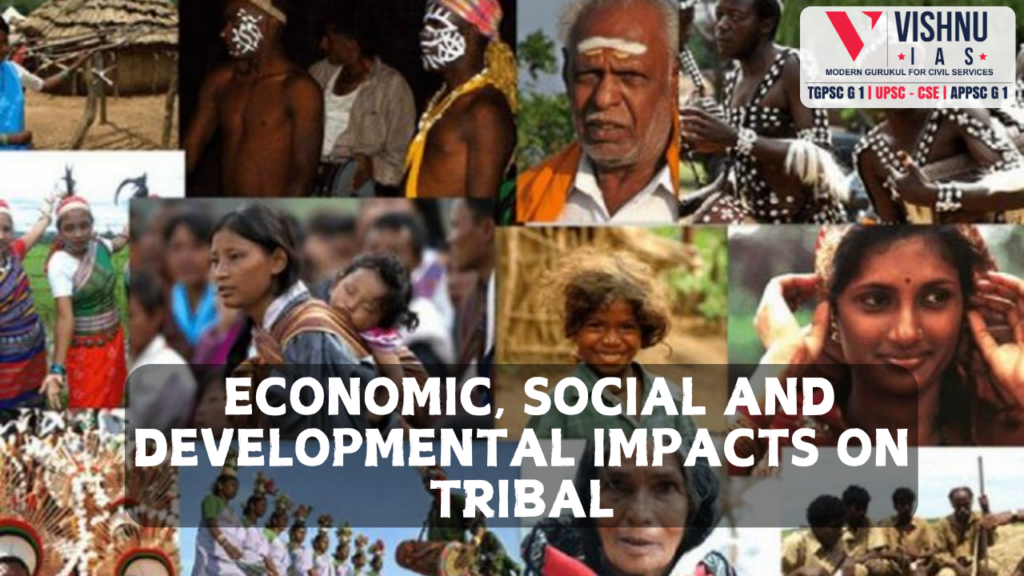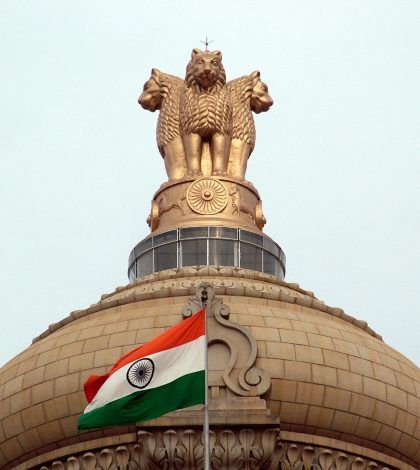Discuss the economic social and developmental impacts on tribal communities with special reference to mining.
Approach
- Introduction: Add few introductory lines
- Body: add comprehensive analysis about the economic, social and developmental impacts on tribal communities with special reference to mining.
- Conclusion: add its contemporary status
INTRODUCTION
Mining activities have profound economic, social, and developmental impacts on tribal communities.
Let’s explore these impacts in detail:
Economic Impacts
- Employment Opportunities:Mining can create job opportunities for local communities, including tribal populations. However, these jobs are often low-paying and temporary.
- Economic Displacement:Traditional livelihoods such as agriculture, hunting, and gathering are disrupted. This displacement can lead to economic instability and increased poverty among tribal communities.
- Revenue Generation:While mining can generate significant revenue for the state and private companies, the benefits often do not trickle down to the local tribal populations.
Social Impacts
- Displacement and Resettlement:Mining projects often lead to the displacement of tribal communities from their ancestral lands. This displacement disrupts social structures and cultural practices.
- Health Issues:Mining activities can lead to environmental pollution, causing health problems such as respiratory issues, waterborne diseases, and other chronic conditions
- Cultural Erosion: The influx of non-tribal populations and the disruption of traditional lands can lead to the erosion of cultural practices, languages, and identities.
Developmental Impacts
- Infrastructure Development:Mining can lead to the development of infrastructure such as roads, schools, and hospitals. However, these developments often prioritize the needs of the mining companies rather than the local communities.
- Environmental Degradation:Mining activities can cause significant environmental damage, including deforestation, soil erosion, and water contamination. This degradation affects the sustainability of local ecosystems and the livelihoods of tribal communities.
- Social Conflicts:The presence of mining companies can lead to conflicts over land rights and resource use. These conflicts can exacerbate social tensions and lead to violence.
Case Studies
India
In India, tribal communities in states like Jharkhand, Odisha, and Chhattisgarh have been significantly affected by mining activities. The displacement of these communities has led to loss of livelihoods, cultural disintegration, and increased poverty.
Ex: Maler tribe of Raj mahal hills, Dongria kondh tribe of Niyam giri hills.
Australia
Indigenous communities in Australia have faced similar challenges. Mining on traditional lands has disrupted their connection to the land, leading to social and ecological impacts. The destruction of natural habitats and the loss of ecosystem services have further compounded these issues.
CONCLUSION
While mining can bring economic benefits and development opportunities, the negative impacts on tribal communities are profound and multifaceted. Addressing these impacts requires a holistic approach that includes fair compensation, sustainable development practices, and the protection of cultural and environmental rights.
Anthropology Full Course at Vishnu IAS Academy
What does Course Offer?
- 4 Months (250+ Class Hours)
- Online (App + Web) / Offline / Hybrid Mode of Classes
- Live + Recorded Videos Access For 1 Year
- 2 Hour Live Class From Monday to Saturday (1.5 Hours for Class + ½ Hour for Doubt Solving)
- Foundation to Advanced Level of Teaching
- Simple and Integrated Content
- One Stop Solution Books
- Regular Value Added Content
- Current Affairs & Case Studies Modules
- Daily Answer Writing Practice
- Weekly Grand Tests On Sundays & Evaluation With Guidance and Topper Will be Rewarded
- 500+ Model Answers
- 9 AM – 9 PM Support System
- Free GS Current Affairs
- Free Interview Guidance for Anthropology


